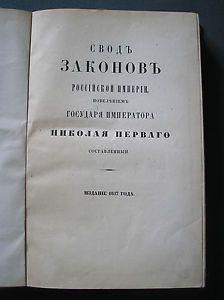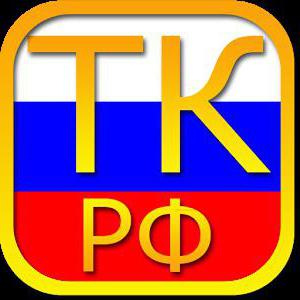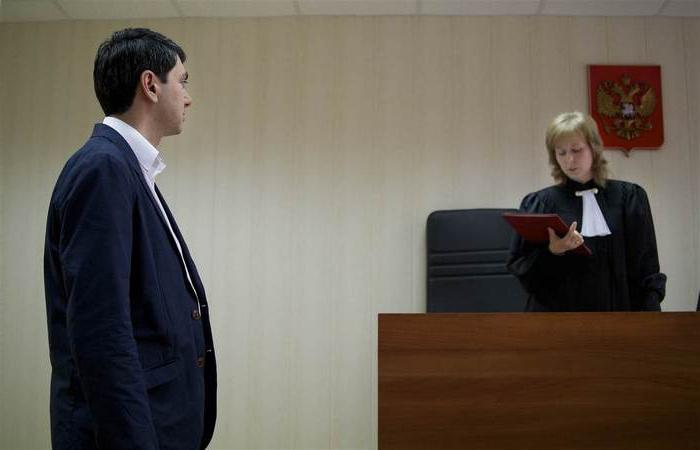Civil law of the Russian Federation - The legal industry, which combines the rules governing property and non-property relations. The provisions are based on independence, independence, equality of participants. Consider further foundations of civil law. 
general characteristics
What is the essence of civil law? The norms that form the industry are designed to provide the most favorable conditions for satisfying particular needs that do not contradict morality. The provisions are also oriented towards the normal development of economic relations. Here what is the essence of civil law. The main principles on which the industry is based are:
- Equality.
- Freedom of contract.
- Inviolability of the property.
- Inadmissibility of interference with privacy.
- Ensuring the unhindered implementation of the legal capabilities of participants in relations
- Ensuring the restoration of violated interests.
Origin of the concept
Civil Law Basics originated in ancient Rome. In the old days, two concepts were used - Ius civile and Ius gentium. The first was used by praetors in resolving disputes between the citizens of Rome. Lus civile was contrasted with Ius gentium. The latter was used in resolving disputes arising between persons living in dependent lands and foreigners who were in territories controlled by Rome. Subsequently, Ius civile began to cover almost all areas of private law. Subsequently, the concept moved into modern terminology. It has become the name of one of the largest, fundamental industries. In this regard, today civil law is often referred to as civil (civil law), and specialists involved in it, respectively, civilists.
The emergence of regulations
In the heyday of Rome with its developed commodity circulation, those provisions that regulated various property relations received special development. It was they who in a processed form determined civil law lawssystematized in the 19th century. It was at that time that comprehensive normative acts began to be created. He acted as one of the first Civil Law Code Napoleon (1804). This name was rather arbitrary, but it corresponded to the period when the estate was gradually supplanted by the society of equal people.
Formation Features
As mentioned above, the rapid development of commodity-money relations created the basis on which it began to be built civil law. it There was an extensive system of norms governing property circulation. The sources were judicial precedents. Roman law is considered the most developed form in ancient times. It was in it that the first norms were formulated, which were subsequently taken as a basis by civilists. After the fall of the Empire and the settlement of barbarian tribes on its territory, Roman law ceased to apply. Feudal relations were developed in the Middle Ages. They were based on subsistence farming. Civil law at that time applied only in certain areas of life. In general, it was formed mainly by local norms and customs. 
Rebirth
The restoration of commodity production led to an increase in interest in Roman law. It was considered the most advanced legal industry of that period.This led to the introduction of the norm into circulation and their subsidiary (additional) application. The implementation took place mainly through commenting on the provisions of glossary schools. The revival of the norms came to be called reception.
19th century
In the XIX century, in a revised form or in the original wording, the provisions of Roman law were introduced into the civil codes of Austria, France, Germany and other countries. The key principles at that time were: a ban on government intervention in the economic life of society, freedom to dispose of private property and enter into contractual relations, and formal equality of the parties. In some countries, they began to share civil law. it was characteristic of rapidly developing countries. Within the framework of general discipline, sets of norms governing trade were identified. These provisions have been specifically adapted for the rapid conclusion of transactions in the industrial sector. It is worth saying that in some states (in Germany, for example), trade codes were approved earlier than civil codes.
20th century
This period was marked by a cardinal change in government in many countries. In the socialist powers, labor standards began to be distinguished from civil law. They were aimed at the quick execution of working relations, accounting for the unemployed, and ensuring labor protection. In the course of the development of civil law norms after the Middle Ages, non-property (personal) relations, which were not directly related to the protection of material interest, but as a result, were defined in the regulatory sphere. In particular, norms were introduced to ensure the protection of honor and business reputation, authorship, inviolability of the name of the enterprise, and so on. After a while, on the basis of these norms, the modern civil law. it was due to the fact that the regulatory methods provided for by the regulations were similar to those that regulated the circulation of property. Both in those and in these norms proclaimed dispositivity, equality of parties, non-interference in private affairs, compensation for damage (material and moral) and so on. 
The situation in European countries
In the territory of these states for a long time there was a division into trade and civil law. it was due to the desire to clearly regulate heterogeneous, as was then thought, relations. During the twentieth century, the need for such a division has disappeared. As a result, general civil codes were adopted. At the same time, they included reservations aimed at regulating relations between professional participants in the turnover. It is believed that the rules governing trade interactions act as special with respect to civil law provisions. Accordingly, their characteristics are also given. Civil law is called general, and labor and trade are referred to as special private sectors.
Relations
Civil law of the Russian Federation, like other countries, it is called upon to regulate private (non-property and property) relations of people, as well as legal entities formed by them at the initiative of participants, on the principles of independence and independence, equality of parties, aiming to satisfy their own interests. This industry has a number of specific features. Of primary interest is subject of civil law. It is formed by relations of two types:
- Property They add up to material goods, things that have a commodity form.
- Non-property. These relationships may or may not be related to material relationships.
Property Interactions
Subject of civil law make up relationships related to:
- Wealth management.
- Belonging things to anyone.
- The transfer of benefits from one participant in the turnover to another.
Interactions that relate to property ownership are governed by the rules of property law. With regard to relations associated with intangible goods - exclusive provisions. The latter, for example, include intellectual property standards. Relations related to the management of property, its transfer from one person to another, are governed by the provisions on the law of obligations, and in the corresponding part - on inheritance. Property interactions arise about specific things. They may be intangible or tangible goods. These include not only tangible things, but also a number of property rights (for example, the use of real estate). 
Entrepreneurship
The emergence of property relations is associated with the production of goods, their distribution, exchange and consumption. Among such interactions, entrepreneurship is particularly highlighted. It has the following features:
- Focus on systematic revenue generation.
- Riskiness and independence of actions of participants.
- Personal responsibility of the entrepreneur.
- The need for state registration, and in established cases, obtaining a license.
In some cases, entrepreneurs lose their property. There is always a risk of loss of funds invested in your business. Not a single entrepreneur has a guarantee that his work will always be profitable.
Non-property relations
Subjects of civil law can interact with each other in a variety of areas. Particular attention is paid to the regulation of non-property relations. They are divided into two categories. The first includes the interaction of the creators of products of intellectual labor. They may be associated with property circulation, but may exist outside of it. Russian civil law contains a set of special rules governing relations on the use of the results of mental labor and means of individualization of products and enterprises. Currently, these products have a very specific cost and are considered as a commodity. Special standards form the appropriate civil law institutions. So, for example, sets of rules governing authorship and the patent system have been created. Relatively recently, the Institute of Industrial Property was formed. Another category of non-property relations is characterized by the absence of any connection with property turnover. This refers to interactions arising from the recognition of inalienable freedoms and human rights, other intangible goods belonging to him personally. They cannot participate in the exchange of goods. These objects of civil rights belong to a person from birth. It is impossible to refuse them. These, in particular, include the right to life, health, name, privacy, etc. 
Sub-sectors
Due to the development and complication of modern property turnover, new civil law institutions. They combine the rules governing a specific group of homogeneous relations. They, in turn, form sub-sectors of law. Relations associated with the management of company property are based on the voluntary membership of participants. These interactions arise during the creation of business companies, partnerships, production cooperatives. In accordance with the above information, you can determine the main ones. Key sub-sectors are: proprietary, exclusive, liability and corporate law.
Regulation method
It is a system of special techniques by which the proper behavior of participants in a relationship is determined. The regulatory method involves:
- Autonomy of the will of the parties.
- Equality of participants.
- Property independence of persons.
- The restorative nature of rights, ensuring their protection.
- Responsibility of subjects.
The regulations contain various prescriptions for participants in the turnover. They are aimed at ensuring order in society, observance by individuals of each other's interests. The established norms are of great importance. obligations. In civil law the principle of equality of participants is being implemented. Providing legal opportunities, the state sets certain restrictions on their implementation. Civil Law Obligations Are models of proper behavior. They suggest that one participant in the relationship should perform an action in favor of the second or refrain from it. The guarantee of fulfillment of obligations is provided by the norms of liability measures. So, for example, a creditor to whom a debtor has delayed payment may require early repayment of all debt. 
Civil Law and Civil Procedure
These two concepts are closely related. Regulatory acts provide for the possibility of protecting the interests of participants in the turnover. Civil Law and Civil Procedure are enforcement tools. As mentioned above, participants in the turnover have certain legal capabilities. To maintain a balance of interests, normative acts establish the obligations of these persons. If, as a result of a violation of the requirements, the interests of other participants are infringed, then they can go to court. As part of the production, various disputes are considered. Civil Law Cases have a large share among other proceedings. Particularly often disputes arise in the sphere of property relations. Recently, cases of copyright infringement have been frequently reviewed. Regulation of legal proceedings is carried out in accordance with the Code of Civil Procedure. This normative act establishes the obligations and rights of participants in the proceedings, especially the stages of the consideration of the dispute, the responsibility of persons, the possibilities of the court.
Principles
Civil law is based on several provisions enshrined in law. The principles are fixed in article 1 of the Civil Code. These include:
- Equality of participants in a relationship.
- Inviolability of the property.
- Inadmissibility of interference with privacy.
- Independence and initiative in the acquisition and exercise of rights.
- Freedom of contractual relationship.
- Unhindered implementation of legal opportunities and their protection.
Equality
This principle assumes that all subjects of civil law have the same legal capabilities. This position must be understood correctly. Consider an example. It is known that men and women differ from each other in physical strength, health status. If you literally interpret the principle of equality, it turns out that they must retire upon reaching the same age. However, the norms set a different number of years for women and men. Should we talk about discrimination in this case? Of course no. After all, as was said above, women differ from men in their level of endurance, strength, and state of health. To equalize the initial position of citizens with norms and sets a different retirement age. Meanwhile, both a woman and a man have the same right to receive payments after completion of their labor activities.
Property Inviolability
Objects of civil rights - property, benefits available to the participants in the relationship. The inviolability of property means a guarantee of the ability to use material assets in personal interests, without fear of prohibitions and exemptions. The Constitution establishes that no one shall be deprived of property that a person legally owns, except in cases expressly provided for by the rules. 
Freedom of contractual relationship
This principle is considered decisive in the development of property turnover.The subjects of law have the freedom to conclude agreements, that is, they of their own free will can choose a counterparty, determine the terms of transactions. Regulatory acts prohibit coercion to draw up contracts, including by government agencies.
Privacy
This principle is primarily oriented towards public authority. The state can intervene in the private life of citizens only in the most exceptional cases. For example, this is allowed if there is a threat to public security, the country's defense. The Constitution establishes the inviolability of family, personal secrets, private life. No one can interfere in the affairs of a citizen without his consent. In case of violation of this principle, the perpetrator may be held accountable.
Dispositiveness
It means the opportunity for participants to choose the appropriate behavior. In this case, the subject takes into account their own interests, opportunities, consequences. So, a person can independently choose whether or not to enter into one or another relationship, whether or not to pay off the debt, whether or not to apply to the court for protection. The presence of dispositive norms ensures freedom of expression of the participants in the turnover.
Functions
Civil law, acting as one of the main legal sectors, implements regulatory and protective tasks. The first function is due to the fact that the role of discipline is primarily to establish normal economic and social relations. In this regard, the number of prohibitions in the legislation is minimal in comparison with the number of permissions. The protective function is aimed at ensuring the protection of the interests of participants in the turnover, maintaining their non-property and property status. Usually it is implemented through the restoration of a violated right or compensation for damages caused by the perpetrator. This function, among other things, involves the use of preventive and educational measures. They are aimed at stimulating such actions of the turnover participants that would exclude violation of the interests of other persons.
